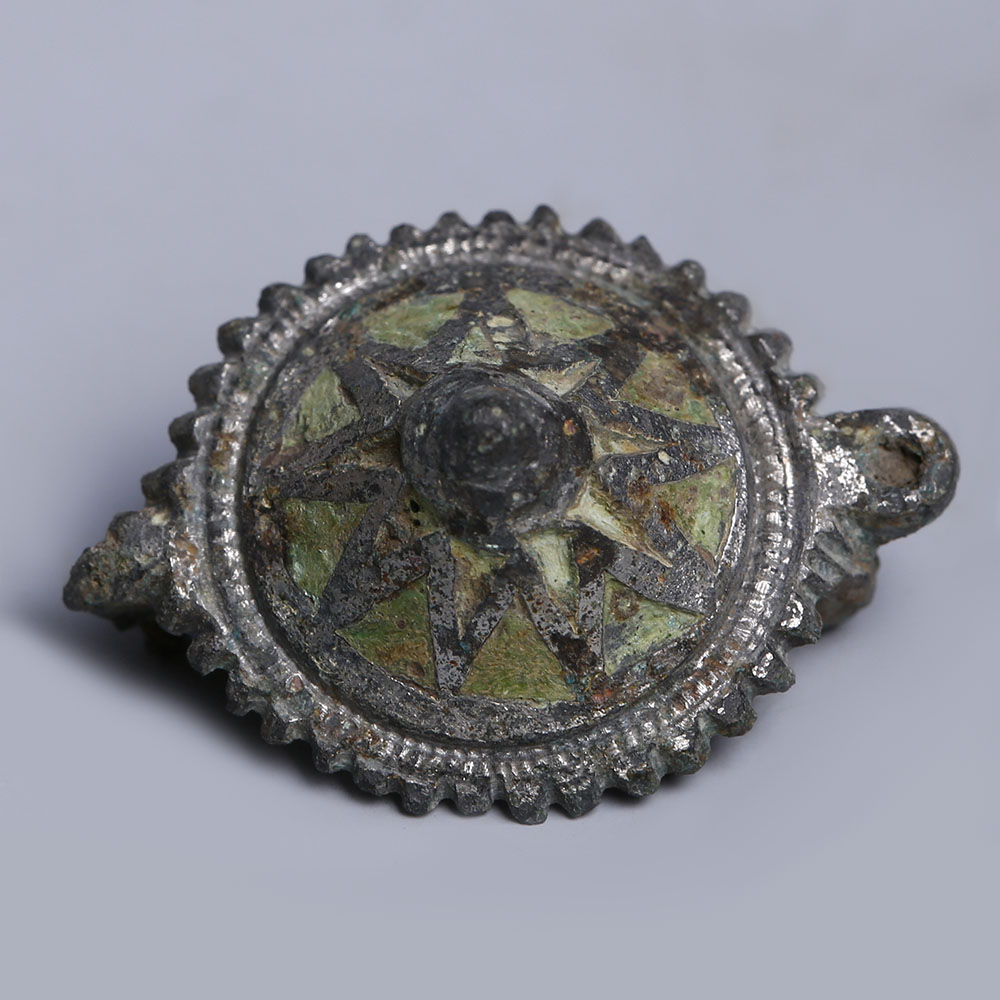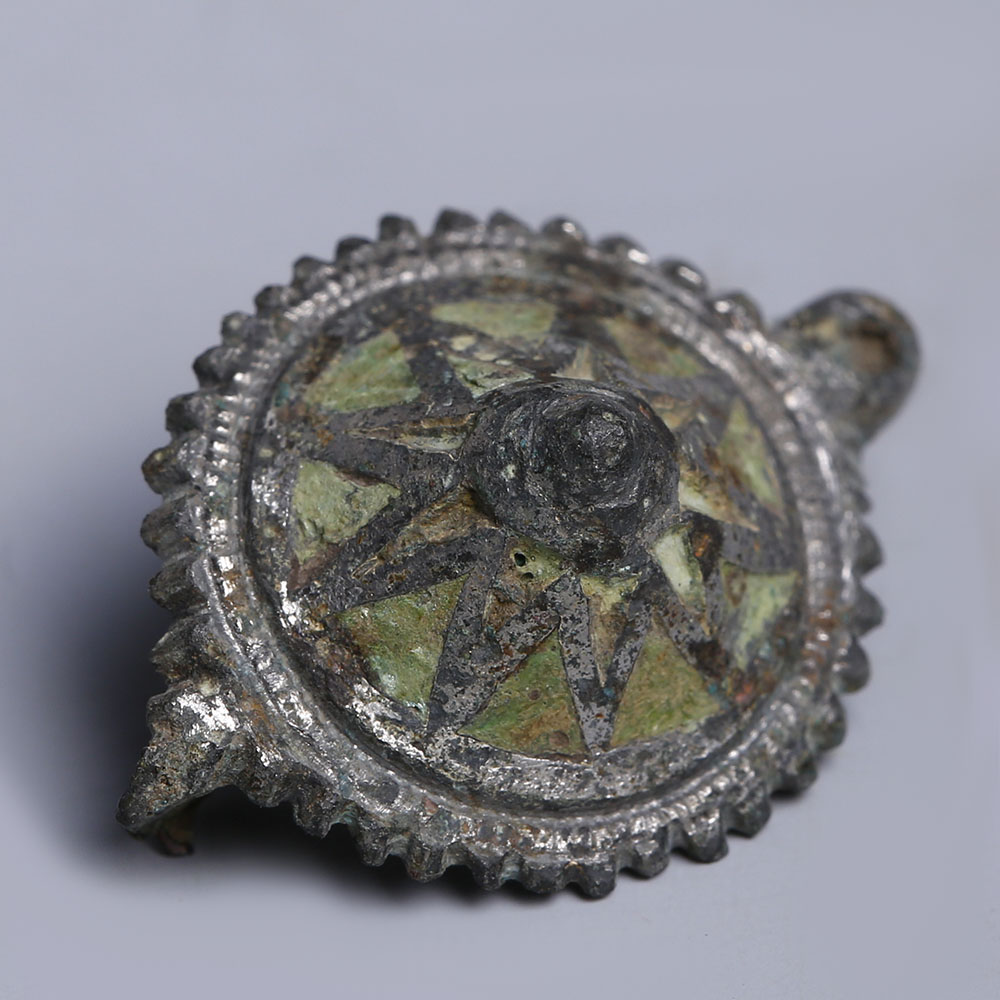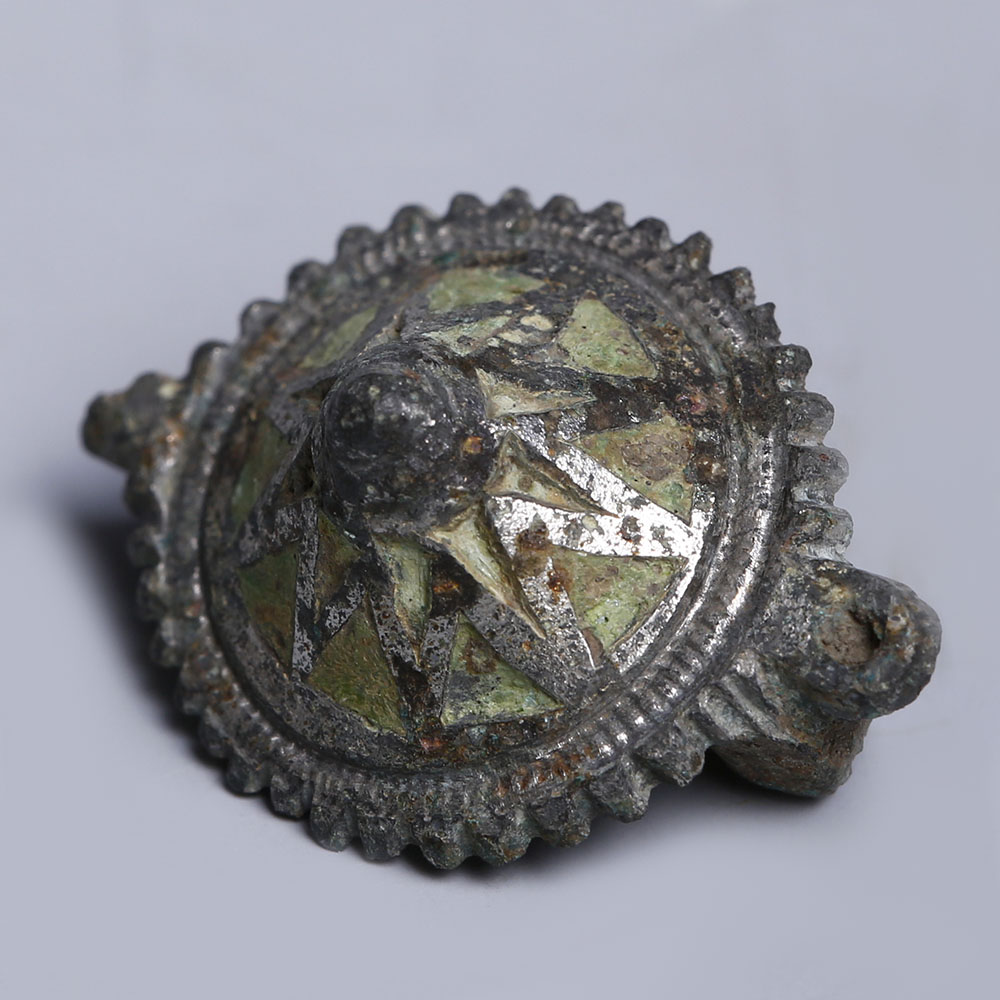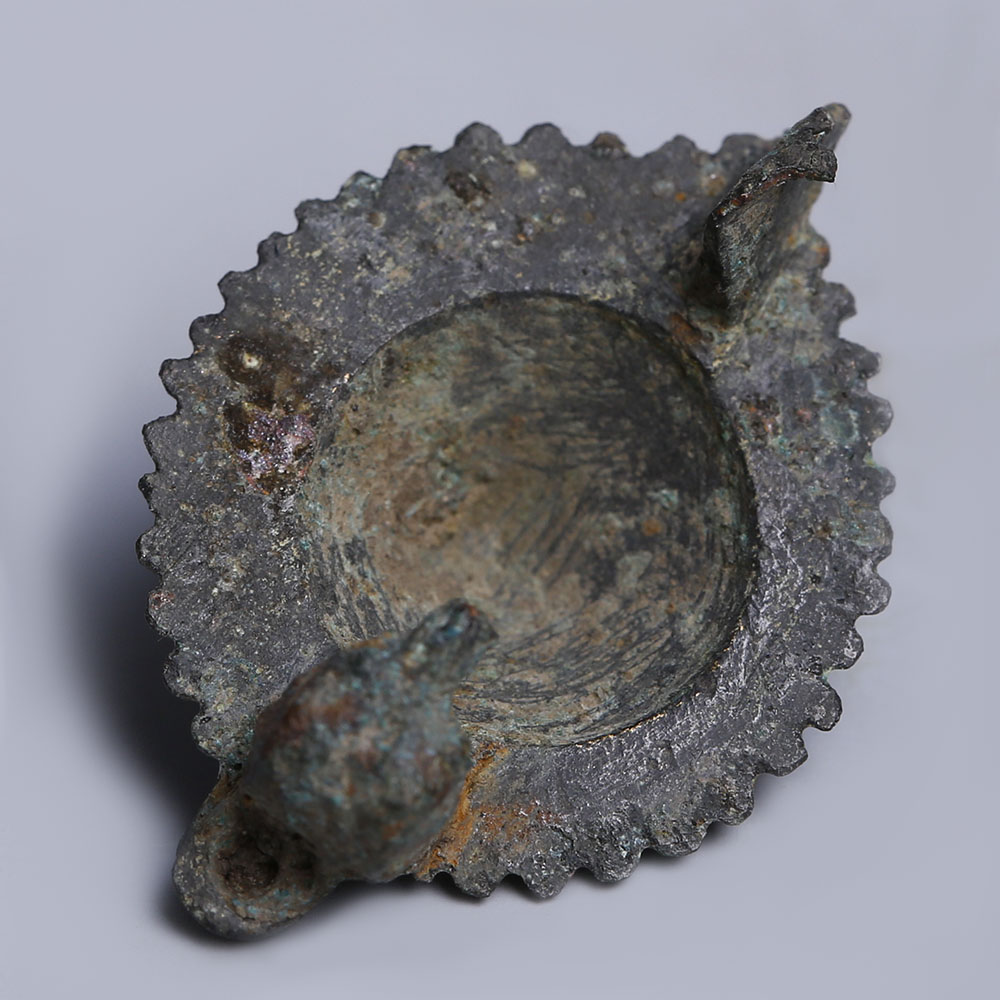Fibulae or brooches were originally used in Ancient Greece and in the Roman Empire for fastening garments, such as cloaks or togae. The fibula designs developed into a variety of shapes, but all were based on the safety-pin principle. The Roman’s conquests spread Roman culture and therefore the use of the fibula, which became the basis for more complicated and highly decorated brooches, modelled in bronze, silver and gold and further enriched with precious and semi-precious gemstones. Fibulae are the most common artefact-type in burials and settlements throughout much of the continental Europe. By the Middle Ages, the Roman safety pin type of fibula had fallen into disuse. Plate or titulus fibulae, occurring with many variations, were extremely widespread across all the Roman Empire during the first few centuries AD.
Ancient Roman Tutulus Enamelled Fibula
$93.38
A finely modelled Ancient Roman enamelled and tinned bronze disk fibula or brooch, featuring a central sun motif. The sun features a raised knob in the middle, with nine triangular shaped rays reaching the frame. The original thin layer of enamel is still present and visible on the brooch. The sun motif was popular in Antiquity across several civilisations. In this case, it could be related to the sun god, Sol Invictus, who was the patron of soldiers, making one of them possibly the owner of this beautiful brooch. This type of brooch, featuring a circular disc plate extended upwards to form a cone shape, is known as tutulus.
Condition: Fine, safety pin is missing.
SOLD



